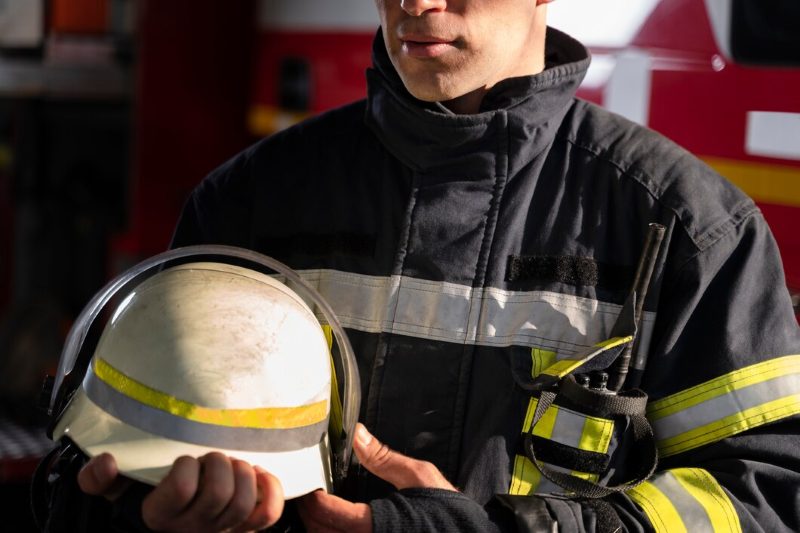Elevating Workplace Defense: The Crucial Role Of A Fire Safety Coordinator
4 Mins Read
Published on: 26 September 2023
Last Updated on: 09 September 2024

toc impalement
Ensuring the safety and well-being of employees is a paramount concern for organizations worldwide. Among the myriad challenges businesses face, the threat of fire looms as a potent and devastating force.
To fortify defenses against this peril, hiring a fire safety coordinator is imperative. They possess a deep understanding of fire prevention techniques and emergency response procedures. Plus, they can communicate, educate, and empower employees at all levels.
This comprehensive guide aims to delve into the pivotal role played by a fire safety coordinator, elucidating the critical tasks they undertake to secure workplaces against the threat of fire.
Fire Risk Assessment
One of the critical roles of a fire safety advisor is assessing fire risk. The coordinator initiates the process with a comprehensive site inspection, where they scrutinize the layout and structural integrity of the workplace. Potential fire hazards are identified, including flammable materials, electrical equipment, and ignition sources.
Additionally, the fire safety coordinator carefully assesses the accessibility of emergency exits and evacuation routes to ensure swift and safe egress during a fire. Next, they compile an inventory of assets, cataloging all valuable equipment, resources, and assets at risk.
Critical items requiring special protection or relocation are prioritized, allowing for targeted safeguarding measures.
Furthermore, the fire safety coordinator considers human factors, which involves considering the number of occupants present during different shifts or hours of operation. They assess employee familiarity with fire safety procedures and identify any special considerations for individuals with mobility or health issues.
This comprehensive evaluation sets the stage for a focused and effective fire safety strategy tailored to the specific risks and needs of the workplace.
Strategic Planning
Strategic planning is the foundation of a robust safety program, and it falls squarely within the purview of the fire safety coordinator’s responsibilities. This phase involves the development of a well-structured fire safety plan that serves as the roadmap for safeguarding the workplace.
Within this plan, the roles and responsibilities of every individual are clearly defined, from employees to emergency response teams and external stakeholders. This delineation of roles and responsibilities within the fire safety plan clarifies expectations and fosters a culture of shared responsibility for workplace safety.
Additionally, the coordinator formulates procedures for swift and effective responses to fire alarms, ensuring a coordinated evacuation process. It includes clear directives on using fire extinguishing equipment and equipping every workplace member with the knowledge and tools to mitigate potential fire risks.
Preventive Measures

This phase revolves around implementing various preventive measures designed to reduce the risk of fires within the workplace and enhance overall preparedness. Here’s an insight into the key components of this critical stage:
Implementing Fire Prevention Strategies
- The fire safety coordinator leads efforts to identify and mitigate potential fire hazards, from addressing faulty wiring to enforcing strict policies on using and storing flammable materials.
- The fire safety coordinator implements a rigorous inspection regimen, ensuring they regularly check and maintain all electrical systems, heating elements, and equipment susceptible to overheating or sparks.
Conducting Employee Training and Awareness Programs
- Employees receive comprehensive training on fire prevention, familiarizing themselves with safe practices, emergency procedures, and the use of firefighting equipment.
- The fire safety coordinator conducts regular awareness programs to keep fire safety in employees’ minds, fostering a culture of vigilance and responsibility.
Regular Equipment Maintenance and Inspections
- Fire safety equipment, including fire extinguishers, sprinkler systems, and alarms, undergo routine maintenance and inspections to ensure operational readiness.
- The fire safety coordinator conducts scheduled audits of fire safety measures, identifying areas for improvement and reinforcement.
The fire safety coordinator’s dedication to these preventive measures minimizes the likelihood of fire incidents and equips the workplace with the knowledge and tools necessary to respond effectively should a fire occur. This proactive approach underscores the coordinator’s commitment to safeguarding the well-being of all occupants within the workplace.
Response And Crisis Management
In the event of a fire incident, the fire safety coordinator’s role transitions into a critical phase of response and crisis management. Here, the coordinator orchestrates a well-coordinated response plan honed through rigorous training and preparation.
The fire safety coordinator activates the established emergency response protocol, swiftly alerting occupants and emergency services. They establish clear and concise communication channels to relay vital information and instructions to all individuals within the workplace.
Additionally, the coordinator liaises with local emergency services, providing them with accurate and up-to-date information about the situation. Ongoing communication ensures a seamless collaboration between internal response teams and external emergency responders.
Furthermore, after the incident has been contained, a thorough evaluation is conducted to assess the effectiveness of the response. Lessons learned and areas for improvement are identified, informing future training and refining the fire safety plan for even greater resilience.
Legal Compliance And Regulations
Adherence to legal standards and regulations is of paramount importance. The coordinator ensures the workplace meets and exceeds the mandated requirements, leaving no room for compromise.
The fire safety coordinator diligently researches and familiarizes themselves with local, state, and federal workplace safety laws, focusing on fire safety protocols. They stay abreast of any updates or amendments to these regulations, ensuring ongoing compliance.
Moreover, the coordinator conducts regular audits and assessments to verify that all workplace fire safety aspects meet or surpass the stipulated legal requirements. They collaborate closely with legal advisors and regulatory authorities to promptly address potential non-compliance areas.
The fire safety coordinator understands the gravity of non-compliance with fire safety regulations, ranging from legal penalties and fines to reputational damage and, most importantly, jeopardizing the safety of occupants. They implement corrective measures swiftly and decisively to rectify any identified compliance issues.
Final Takeaway
From meticulous risk assessments to strategic planning and preventive measures to crisis response, the coordinator’s dedication is instrumental. They stand as the vanguard of preparedness, ensuring that every individual within the workplace has the knowledge and tools to navigate fire emergencies.
Read Also:


















Comments Are Closed For This Article